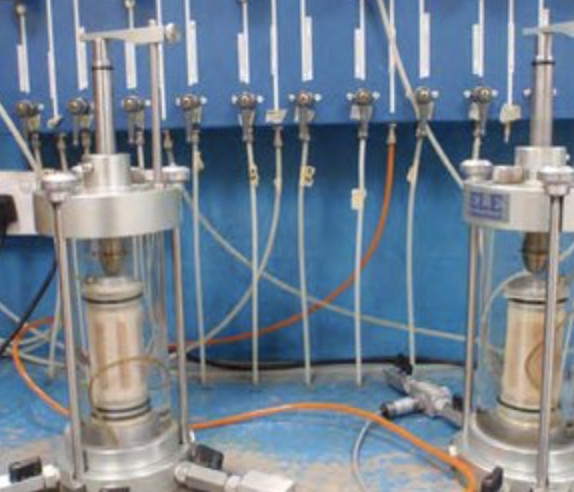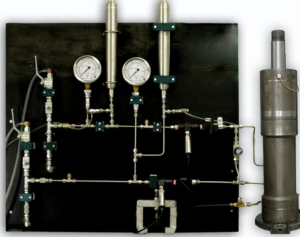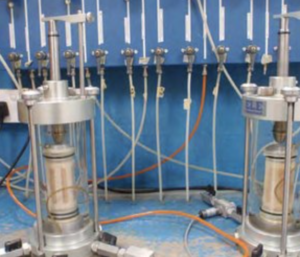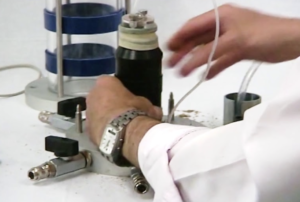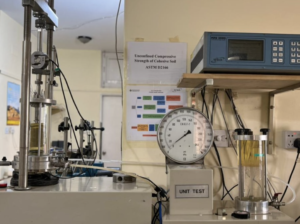How Triaxial Saturators Improve Accuracy in CU and CD Triaxial Tests
I’ve seen saturators turn messy CU/CD results into clean, believable curves. Quiet tools, big impact.
Quick takeaway: Full saturation removes trapped air, stabilizes pore pressure, and lets effective stress stay real. With steady back-pressure steps and B-value checks, CU/CD data becomes trustworthy and repeatable.
Let’s walk through why saturation matters, how it controls effective stress, B-value verification, and why design depends on it.
Why Is Full Saturation Critical in CU and CD Tests?
Without full saturation, pore pressure lies. Then CU/CD strength and stiffness don’t match the soil’s true behavior.
In short: A triaxial saturator replaces air with water, lifts B-value toward 1.0, and prevents fake stiffness or over-optimistic strength.
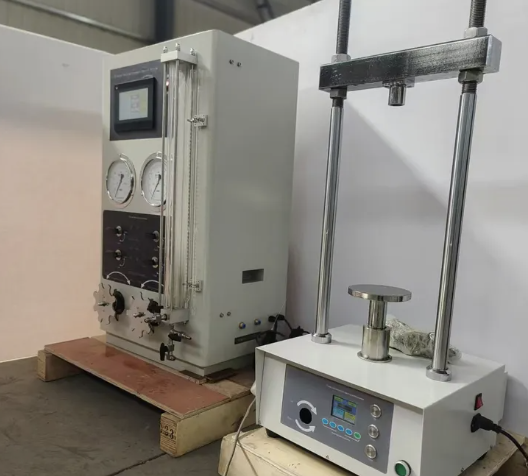
There’s a moment I love: late night, low noise, the B-value climbing past 0.95 on a sensitive clay. The whole room relaxes. From that point, undrained shear1 in CU and drained stiffness in CD start to make sense. Before saturation, micro-bubbles compress like tiny springs and distort readings. After saturation, pore water responds as it should, and effective stress paths2 behave. I keep the routine boring—CO₂ flush, de-aired water, small effective stress, patient holds. Boring gives me clean data.
What full saturation corrects
| Problem (if unsaturated) | What you’ll see | What saturation fixes |
|---|---|---|
| Compressible air | Fake high stiffness | Realistic stiffness and modulus |
| Drift in pore pressure | Shaky CU response | Stable Δu and clear stress path |
| Boundary micro-leaks | Noisy volume change | Tight holds, smooth k and εv |
| Inconsistent repeats | Scatter across specimens | Repeatable curves and parameters |
Practical aids: Saturation SOP card checklist • Leak-hunt mini-test script • De-air chain setup guide
How Do Saturators Support Effective Stress Control?
Effective stress is the star of CU/CD. Saturators set the stage by keeping it tiny during saturation and predictable afterward.
Bottom line: By stepping back pressure while adjusting cell pressure, the saturator keeps σ′ low (≈2–5 kPa) until the specimen is fully water-filled.
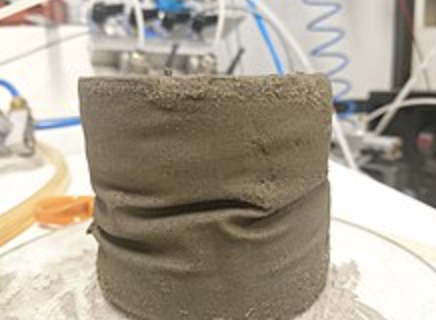
In CU tests, you want undrained shear to reflect real pore pressure generation—not air compression. In CD tests, you want drainage governed by soil and boundary conditions—not leaks. My routine: raise back pressure in 50–100 kPa steps for clays (25–50 kPa for sands), reduce cell pressure to hold near-zero effective stress3, wait for equalization, and log time-to-B4. If the drift in a hold test is near zero, I move up a step. If not, I clean lines or swap a suspicious porous stone.
A calm control loop (effective stress aware)
- Set a small confining pressure and verify seals.
- Begin back-pressure; simultaneously trim cell pressure to keep σ′ ≈ 2–5 kPa.
- Pause for equalization; watch volume drift.
- Repeat steps until target B is reached; only then start consolidation.
CU vs. CD focus
| Mode | Saturator’s job | Why it matters |
|---|---|---|
| CU (Consolidated Undrained) | Lock in true saturation before undrained shear | Accurate Δu, strength, and stress path |
| CD (Consolidated Drained) | Ensure no residual air before long drainage | Reliable k, εv, and drained modulus |
Templates: Effective-stress step planner worksheet • Valve choreography card map
What Role Do Saturators Play in B-Value Verification?
B-value tells you if the voids are water-filled. The saturator makes B rise and keeps it stable for the check.
Core idea: B = Δu/Δσ₃ under a small cell-pressure pulse. With the saturator’s back-pressure steps and holds, B climbs toward 1.0.

I treat the B-check5 as the truth test. Apply a small Δσ₃, read the immediate Δu, divide, and you get B. If B is low, I don’t guess—I investigate: porous stones clogged? A high point in tubing trapping air? A dodgy O-ring? The saturator6’s job is to make this check boringly consistent. When B holds steady over repeated pulses, you can trust your next stage—consolidation and then shear.
B-value targets and actions
| B-range | Meaning | Action I take |
|---|---|---|
| ≥ 0.98 | Excellent | Proceed; note the value in the log |
| 0.95–0.98 | Good | Proceed, but record and watch drift |
| 0.90–0.95 | Borderline | Extend holds; clean lines/stones |
| < 0.90 | Insufficient | Re-saturate; find and fix leaks |
Tiny habits that help
- Log time-to-B and hold drift each step.
- Snap a quick photo of valve positions.
- Repeat the B-pulse twice to confirm stability.
Tools: B-calculator sheet template • Pulse-test quick card one-pager
Why Are Saturators Essential for Reliable Geotechnical Design?
Designs live or die on parameters. If saturation is sloppy, CU/CD parameters wander—and risk gets mispriced.
Short answer: Stable saturation shrinks scatter, tightens correlations, and gives designers stiffness and strength values they can actually use.
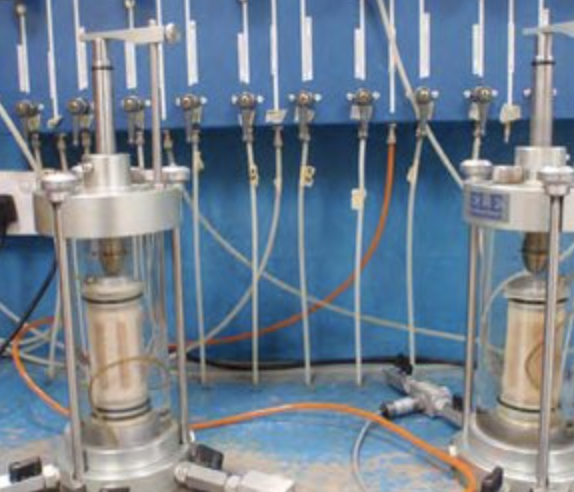
I’ve sat with project teams who only wanted “numbers we can build on.” When saturation is disciplined, CU delivers credible undrained strength7 and pore pressure behavior; CD gives realistic drained modulus8 and volume change. Risk workshops get calmer. Contingency shrinks. For owners and contractors, that means fewer redesign loops and clearer methods.
Where good saturation pays off
| Decision | Parameter you trust more | What improves |
|---|---|---|
| Deep excavations | su, Δu response (CU) | Wall embedment, strut forces |
| Rafts & piles | Drained modulus (CD) | Settlement predictions |
| Tunnels | Effective stress path (CU/CD) | Face stability, support classes |
| Ports/coastal | k and drained stiffness (CD) | Dewatering and serviceability |
Field-friendly extras: one-page QA legend for reports handout • Retest trigger thresholds matrix • Risk checklist for lab-to-design handover list
A small story: we once traced scattered CU results to a single porous stone that “looked fine.” After a back-flush and swap, the next three specimens lined up like rails. Same soil. Same device. Better saturation.
Conclusion
Make saturation calm and repeatable. Then CU/CD numbers speak clearly—and your designs stand on solid ground.
-
Understanding undrained shear is crucial for interpreting soil behavior under saturated conditions, enhancing your knowledge in geotechnical analysis. ↩
-
Exploring effective stress paths will deepen your insight into soil behavior, essential for accurate geotechnical engineering assessments. ↩
-
Understanding near-zero effective stress is crucial for accurate soil testing and analysis. ↩
-
Exploring time-to-B will enhance your knowledge of pore pressure response in soil testing. ↩
-
Understanding the B-check can enhance your testing accuracy and reliability in various applications. ↩
-
Exploring the saturator’s function can provide insights into maintaining consistency in your testing methods. ↩
-
Understanding credible undrained strength is crucial for effective project planning and risk management in construction. ↩
-
Exploring drained modulus helps in understanding soil behavior under load, essential for accurate engineering assessments. ↩

